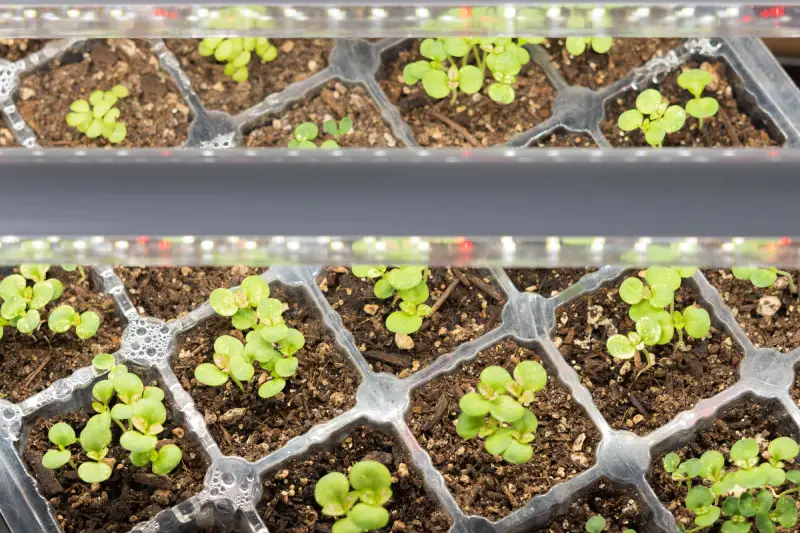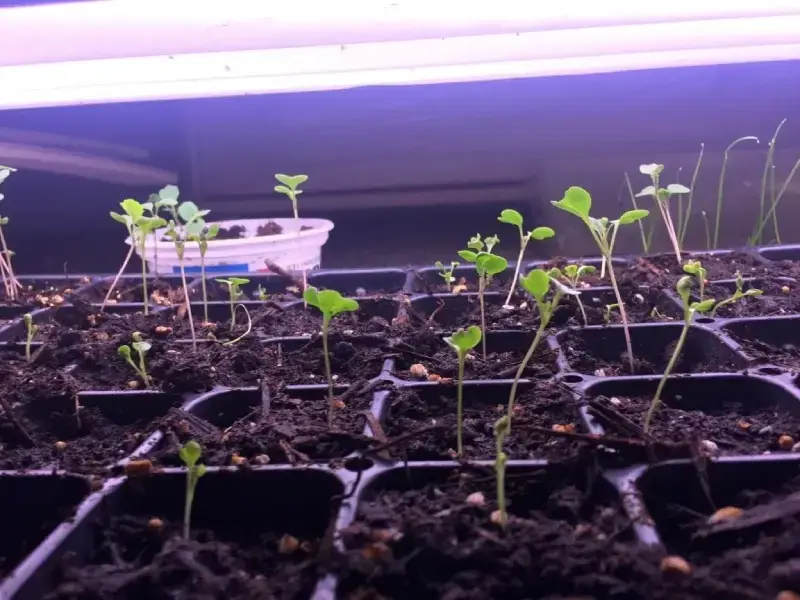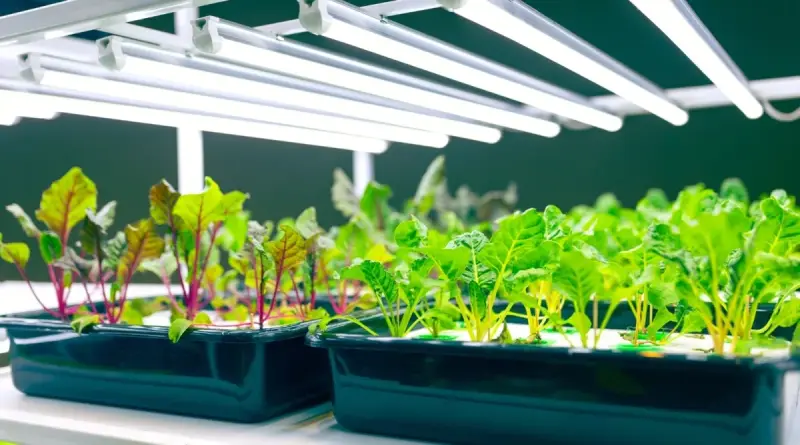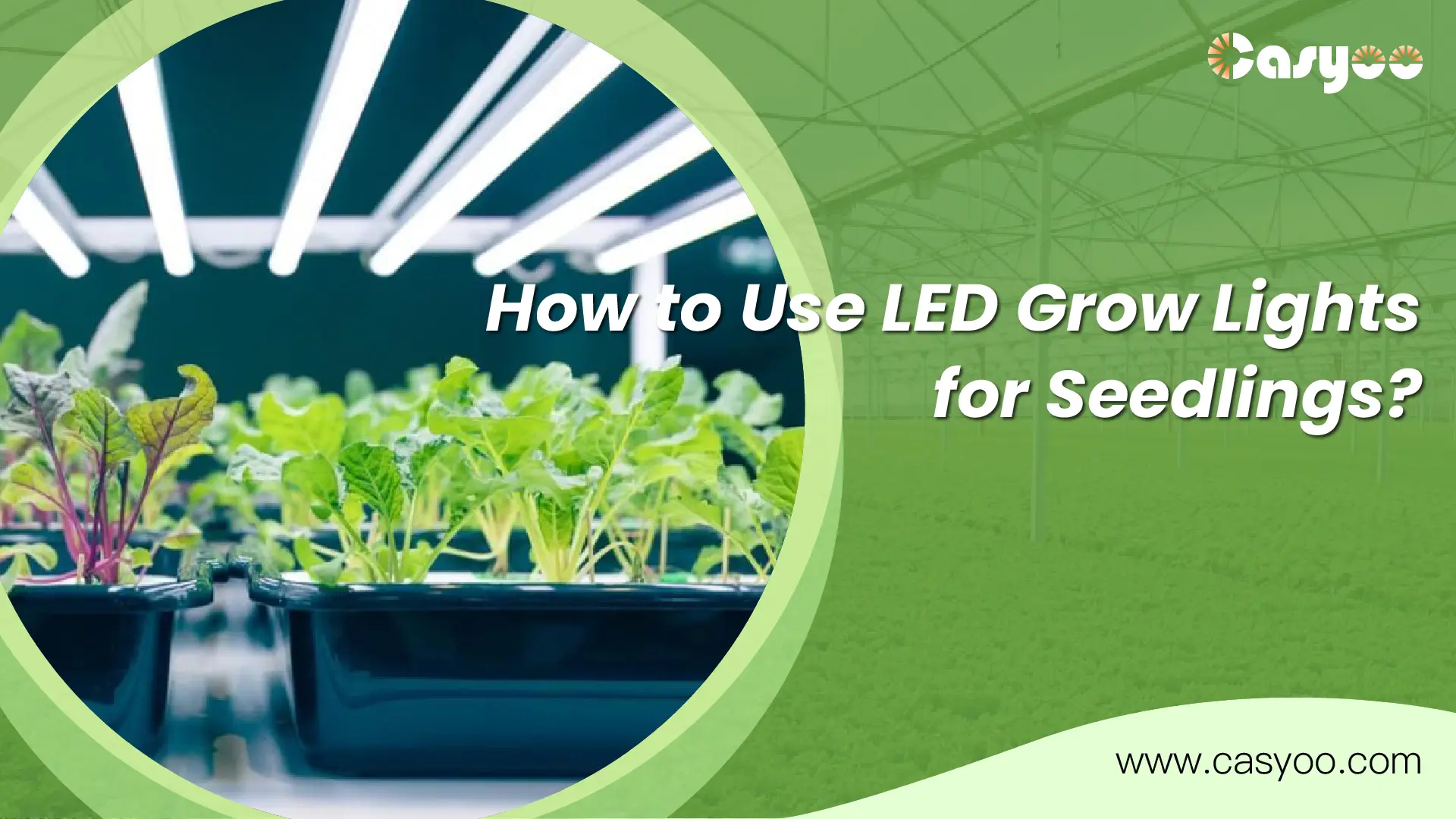Starting your seedlings under LED grow lights can be a complex topic, but you will find it’s much easier than you thought after reading this post. In this article, we will walk you through everything you need to know about using LED grow lights for seedlings.
Do you need LED grow lights for seedlings?
Have you ever seen super tall seedlings, even leaning against a window? They are stretching to find more light. Without enough light, seedlings will become leggy and risk tipping over or breaking.
One of the best ways to prevent these leggy plants is to use a seedling grow light. A bright sunny window often cannot provide sufficient light for seedlings, especially on rainy days and in winter. Using a grow light for seedlings is the way to go. The ample light provided by the grow light will keep the seedlings compact.
What are the benefits of placing seedlings under grow lights?

Controlled Lighting: Grow lights allow you to precisely control the duration and intensity of light for your seedlings.
Continued Growth: Grow lights ensure your seedlings receive consistent lighting. This promotes stable, even growth compared to relying on natural sunlight.
Faster Ripening: The intense, full-spectrum light from grow lights accelerates seedling growth. This allows the plants to mature into healthy, robust seedlings more quickly.
Increased Yields: By providing optimal growing conditions for your seedlings from the start, you can set them up for maximum yield potential when they reach the flowering stage. Strong, vigorous seedlings transform into larger, more productive plants.
Disease Prevention: Grow lights help prevent problems such as stretching, nutrient deficiencies, and mold that can occur due to insufficient light. This creates an environment that is less prone to problems that might hinder plant growth.
Do seeds need light to germinate?
The germination of most plant seeds only requires optimal water, temperature, and oxygen, and is not affected by the presence or absence of light. These seeds are called medium-light seeds, such as rice, wheat, soybeans, cotton, etc.
Some plants grow well under light conditions, but cannot germinate or germinate poorly in the dark. Such seeds are called light-demanding seeds, such as lettuce, carrots, etc.
Some plant seeds germinate well in the dark, which are called light-inhibited seeds, such as onions, leeks, etc.
When do I put my seedlings under LED grow lights?
You should place your seedlings in the light as soon as the first seedlings sprout. But as I mentioned before, some types of seeds require light to germinate. In this case, you should put them under light immediately after planting them.
How many hours of light do seedlings need?

Once germinated, seedlings will need 12-16 hours of light per day, depending on your plant type.
If you’re new, I recommend starting with leaving the lights on 14 hours a day. Then keep a close eye on your seedlings. If they start to stretch, increase it to 16 hours a day. On the other hand, if they stay compact, then you can reduce the amount of light to 12 hours to save some energy and see how they perform in less light.
What color grow lights for seedlings should I buy?
For seedlings growing indoors, choose a full-spectrum grow light. Full spectrum light is the closest to natural sunlight and you get the ideal balance of red and blue light.
Blue light regulates plant growth and keeps plants short and strong, but too much blue can also cause stunted plants over time. Red light will stimulate vegetative growth and flowering, but too much red light will make plants tall and skinny. Ordinary household incandescent light bulbs emit primarily a warm light that gives off a cozy atmosphere but is not suitable for plants.
When to stop using LED grow lights for seedlings?
As long as you grow seedlings indoors, they should be placed in the light. The only time you stop using the grow light is when you are transplanting your seedlings outdoors. However, you’ll want to turn your grow lights back on every time you bring them indoors, or they’ll quickly start to get leggy.
How far away should grow lights be from seedlings?

Grow lights need to be very near to your seedlings to be most effective. You should put them 2-3 inches above the plant canopy. If your intensity setting is adjustable, you can move the fixture higher (6-12 inches above).
You’ll also need to adjust the height regularly. The leaves of the seedlings should not come into contact with the bulbs, or they may burn your seedlings. So check your seedlings daily and move your lights further if necessary.
Do you need to rotate your seedlings?
If you can provide adequate light for your seedlings, then you don’t need to rotate them. However, if you see some seedlings on the outer edges begin to stretch, you’d better rotate them every day to ensure even growth.
Tips on how to start seedlings under grow lights
Here are some tips to help you successfully start seedlings under grow lights:
- Keep the soil moist at all times, but not soaked.
- Use fertilizer only when the plants have true leaves.
- Keep the temperature around 18-24°C (65-75°F) during germination.
- When transplanting seedlings, remember the hardening-off period before placing them outdoors.
- Use a bleach solution (10%) to clean the device thoroughly.
About us
With 17 years of experience, Casyoo provides high-quality LED grow lights for seedlings. All of our products are certified, including but not limited to CE, UL, and RoHS. With our premium LED grow lights, your seedlings will definitely grow and thrive into robust plants. Don’t hesitate to contact us!





